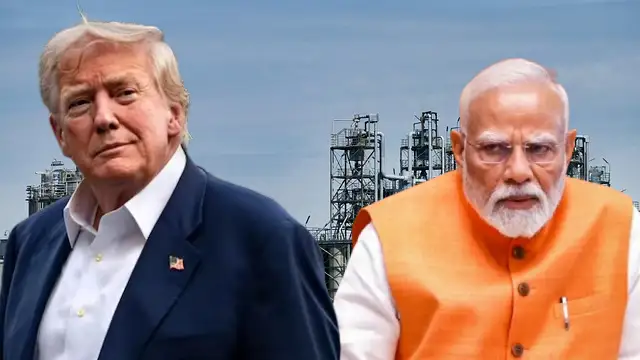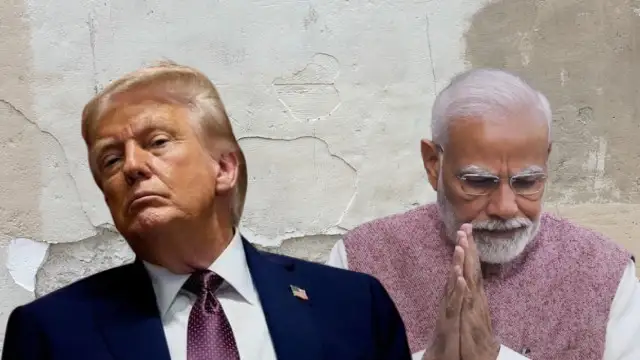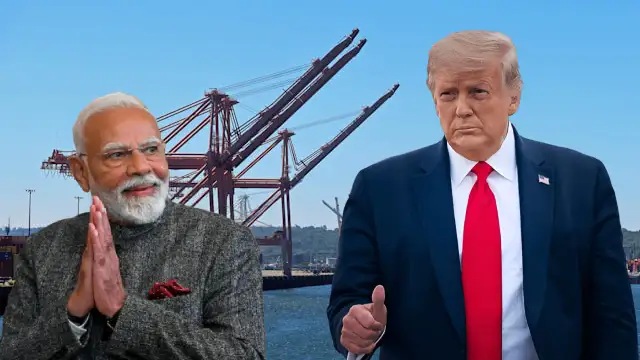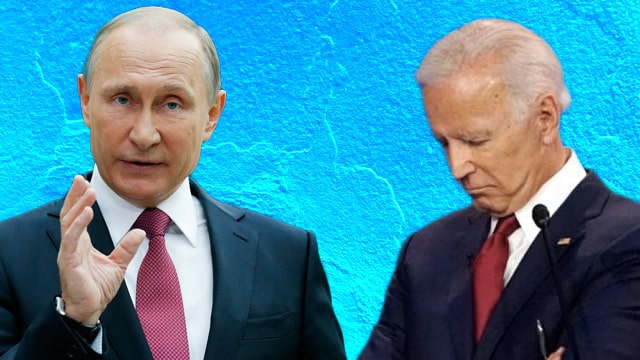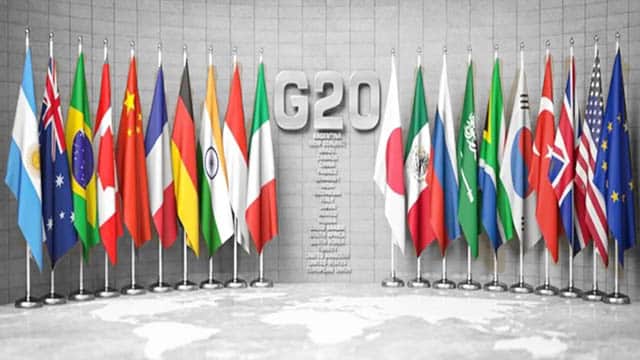After US President Donald Trump trashed Prime Minister Narendra Modi’s bromance bouquet to impose an additional 25% tariffs on imports from India on Wednesday, August 6th, New Delhi’s response has been meek, which exemplifies the far-right government’s unapologetic appeasement policy towards Washington.
In his executive order, Mr Trump wrote that he is imposing the additional 25% tariffs on India because New Delhi continues to buy Russian oil, which he wants it to stop.
“I determine that it is necessary and appropriate to impose an additional ad valorem duty on imports of articles of India, which is directly or indirectly importing Russian Federation oil (sic),” Mr Trump wrote in his executive order.
This comes as an additional shock for Mr Modi, whose far-right Bharatiya Janata Party (BJP) has been hailing the American far-right president for their shared Islamophobia since 2016. Mr Modi’s hug diplomacy and calling Mr Trump a “dear friend” earlier failed to prevent the base tariff of 25% on Indian imports that the US president imposed from August 1st.
Although Indian External Affairs Minister S Jaishankar said that India doesn’t take foreign policy orders from the White House, it’s a fact that the US is India’s largest export destination and also one of the key importers of its crucial service sector.
Mr Trump’s additional 25% tariffs on India fuelled the debate on the future of India-US relations, while also raising questions on Mr Modi’s decision to appease the US. Also, against the backdrop of Mr Trump’s tariffs, questions have arisen over the future of India’s Russian oil import.
While Mr Modi’s government, the BJP’s thinktanks and the Hindutva apparatchiks claim that India has been importing Russian oil for purely economic reasons and it serves the 1.4bn people, in reality, the scenario is different.
Who benefits from India’s oil imports from Russia?
India’s Russian oil import trajectory
India, which used to import less than 2% of its oil from Russia before Moscow initiated its special military operations in Ukraine, saw a peak in Russian oil imports from 2022 onwards, defying the US-led collective West’s diktats.
Before 2022, Russia supplied just 100,000 barrels a day—a mere 2% of India’s oil imports, worth less than $2.5bn a year. The country relied chiefly on West Asian suppliers—Iraq provided 24% and Saudi Arabia 16% of total crude imports of 4.2m barrels a day.
The Russia-Ukraine conflict changed everything.
By 2023, Russia had become India’s largest oil supplier, providing 1.8m barrels a day—38-39% of its crude imports. The shift was staggering. Oil imports from Russia rose 20-fold in volume and 56-fold in value, hitting $140bn in the 2023-24 financial year (FY).
In July 2024, India bought a record 2.07m barrels a day from Russia, capturing 44% of the market and overtaking China as the world’s top buyer.
Meanwhile, India’s traditional oil suppliers were squeezed.
Saudi Arabia’s share fell from 16% to 11-15%, while the US’s share fell from 10% to 4%. West Asia’s collective share dropped from 50% to 45% as Indian refiners seized the opening left by Western sanctions.
India’s windfall from Russian oil
According to reports, the price differential story reveals India’s masterful exploitation of geopolitical tensions for economic gain.
Russian crude oil traded at extraordinary discounts, reaching $32 per barrel below Brent crude in March 2023, creating unprecedented arbitrage opportunities.
The discount evolution tells the story of a market adapting to sanctions.
Peak discount period through 2023 saw Russian Urals crude averaging $12 per barrel below international benchmarks, with discounts frequently exceeding 20% of market prices.
During the April-August 2023 period, India saved $5.8bn from these deep discounts, capturing 23% savings versus Brent crude prices.
However, these golden margins were compressed dramatically by 2024.
Current discounts have narrowed to just $1.70-$2 per barrel—barely 3-4% below Brent prices. This compression occurred due to supply constraints as Russia cut seaborne exports by 20%, increased competition from other buyers like Türkiye, and development of Russia’s shadow fleet that improved sanctions circumvention capabilities.
The total financial benefit to India across 2022-2024 reached approximately $25bn in savings, with $13bn captured in FY 2023-24 alone. These discounts transformed Indian refining economics, enabling both domestic fuel price stability and massive export growth.
However, there is a catch!
Who handles Russian oil imports?
Contrary to the BJP’s claims, the Russian oil imports have not helped the Indian people, as the government or the oil marketing corporations (OMCs) didn’t pass on the benefits to them. Rather, the cheap oil has been used to stockpile more surplus. Corporations, both private and public sector units (PSUs), have seen windfalls.
Private refiners dominate Russian oil processing, handling 60% of imports through strategic infrastructure investments.
Reliance Industries, owned by Mukesh Ambani, who Mr Modi’s opponents accuse of being one of the top oligarchs controlling the regime, emerged as the kingpin, processing 700,000-800,000 barrels per day of Russian crude at its world-largest Jamnagar refinery complex in Gujarat.
The company signed a landmark 10-year contract with Rosneft in December 2024 for 500,000 barrels per day starting January 2025, cementing its position as Russia’s primary Indian customer.
Meanwhile, Nayara Energy represents the most intriguing case study—a refinery 49.13% owned by Russian state giant Rosneft, processing 300,000-400,000 barrels per day at its Vadinar facility.
This creates the unusual situation of Russia directly controlling Indian refining capacity.
India’s refinery infrastructure reveals strategic geographic clustering.
Mr Modi’s home state, Gujarat, hosts India’s largest Russian oil processing capacity through the Jamnagar-Vadinar corridor, while eastern refineries at Haldia and Paradip handle significant volumes.
This infrastructure was rapidly adapted to process Russian crude grades, requiring technical modifications to handle the sulfurous Urals blend preferred by Moscow.
Who profits from Russian oil imports?
The Russian oil bonanza generated exceptional dividend payments to the Indian government, with OMC PSUs contributing substantially to the Rs 438.43bn ($5.3bn) received in FY 2023-24. This represented a dramatic increase from historical levels, with Indian Oil Corporation (IOC) and Bharat Petroleum Corporation Limited (BPCL) combined payouts increasing 255% since 2022-23 due to enhanced profit margins from discounted crude.
Individual company payments reveal the windfall’s scale. The IOC paid Rs 12 per share total dividend (Rs 5 interim plus Rs 7 final) in FY 2023-24, yielding 7.5-9.1% returns—among the highest in PSU stocks.
The BPCL declared Rs 31.5 per share compared to Rs 25 the previous year, while ONGC contributed Rs 100.02bn directly to government coffers in FY 2024-25.
The strategic revenue capture demonstrates government monetisation of geopolitical opportunities.
The data also counters the government’s and the BJP’s claim that India’s Russian oil import has helped the 1.4bn people. The OMCs didn’t pass the benefit to them at all.
PSU OMCs retained the majority of cost savings as enhanced profitability rather than passing full benefits to consumers—petrol prices decreased only 2% despite 65% crude cost reductions. This profit retention translated directly into higher dividend payments, with five state-owned OMCs contributing 42.3% of Rs 3 trillion total PSU dividends between 2020-21 and 2024-25.
Mr Modi’s policy framework changes ensure sustained revenue flows. The November 2024 dividend policy mandates a minimum of 30% of profit after tax or 4% of net worth, positioning PSU dividends as consistent government revenue streams.
This institutionalises the windfall capture, ensuring Russian oil profits continue to benefit Indian OMCs, while the regular consumer keeps paying higher fuel prices.
Exporting refined Russian oil
India’s refiners transformed discounted Russian crude oil into an $84bn export business, making the country the world’s second-largest petroleum product exporter, without being an oil-producing country.
The consumption versus export breakdown reveals sophisticated market optimisation— approximately 75-80% of refined Russian oil serves domestic needs, while 20-25% flows to international markets as diesel, gasoline, aviation fuel, and petrochemicals.
And who earned the most from this oil export?
Reliance Industries dominates the export trade, shipping 36.1 million metric tons annually—80% of India’s total refined petroleum exports.
Ironically, much to Mr Trump’s dismay, the US has been a major buyer of Russian-origin oil from India.
Reliance’s exports to the US alone totalled €724m in Russian-origin fuel between January 2024 and January 2025. This demonstrates how Russian crude reaches American consumers through Indian processing.
Although India’s Russian-origin oil export destinations span the globe, but concentrate in key markets.
Europe remains the largest destination at $18.4bn, with the Netherlands importing 21-25% as a distribution hub via Rotterdam.
Surprisingly, China purchases $52bn in Indian refined oil products, while the US imports $38bn, including $2.8bn traced directly to Russian crude origins.
Singapore serves as a $27bn trading hub, while the UAE provides $24bn in regional distribution.
Diesel dominates at 45% of exports worth $45bn, followed by gasoline at $32bn. Aviation fuel exports grew 32.4% year-over-year in October 2024, reaching $18bn annually.
The geographic flow means European cars run on Russian gasoline refined in Indian facilities, while Asian airlines fuel aircraft with Russian-origin jet fuel processed in Gujarat.
From windfalls to wind-up before Trump’s additional 25% tariffs on India
In its statement regarding Mr Trump’s additional 25% tariffs on imports from India, the Indian Ministry of External Affairs (MEA) said, “The United States has in recent days targeted India’s oil imports from Russia…We have already made clear our position on these issues, including the fact that our imports are based on market factors and done with the overall objective of ensuring the energy security of 1.4 billion people of India (sic).”
Statement by Official Spokesperson⬇️
— Randhir Jaiswal (@MEAIndia) August 6, 2025
🔗 https://t.co/BNwLm9YmJc pic.twitter.com/DsvRvhd61D
Additionally, the MEA highlighted the US hypocrisy on Russian oil import as the president exempted Washington’s European allies from similar punitive measures for doing the same thing.
“It is therefore extremely unfortunate that the US should choose to impose additional tariffs on India for actions that several other countries are also taking in their own national interest,” the MEA said without naming European allies of Mr Trump’s administration.
While putting up a strong image through the online message, backed by no concrete diplomatic measures, New Delhi concealed the fact that Indian OMCs, which had earlier ceased buying Iranian oil following American diktats, have also heavily cut down on Russian oil imports.
European Union’s stringent sanctions on Russian oil import, imposed in July 2025, have forced Indian OMCs’ refining operations to 70-80% capacity.
Critics claim that the state-owned OMCs initially embraced Russian crude but recently retreated under political pressure.
IOC, BPCL and Hindustan Petroleum collectively handled 40% of Russian imports through their extensive refinery networks spanning from Panipat in Haryana to Paradip in Odisha. However, all state refiners halted Russian crude purchases in July 2025 due to narrowing price discounts and the Trump administration’s tariff threats.
While the Indian OMCs have been scaling down Russian crude imports to mitigate the risk posed by Mr Trump’s sanctions, questions arise over why Mr Modi’s government and the MEA are then vouching for India’s energy sovereignty?
What’s India defending when it has already capitulated, with OMCs cutting Russian oil imports?
These are questions the answers to which remain shrouded in mystery.
Can Trump’s additional 25% tariffs trouble India?
Although India isn’t a mammoth manufacturing giant like China, the US continues to remain its largest market in the world. The US-India bilateral trade has hit a record $212bn in 2024. It’s an increase of 8.3% ($16.3bn) from 2023. Goods trade accounted for $128.9bn, with India exporting $87.3bn worth to America (a 4.5%/$3.8bn rise) – led by pharmaceuticals, machinery and refined petroleum – while importing $41.5bn of American goods (up 3.0%/$1.2bn). This yielded India’s $45.8bn goods surplus, 5.9% ($2.6bn) larger than in 2023.
Services trade reached $83.4bn. American exports grew 15.9% to $41.8bn ($5.7bn increase), nearly matching India’s $41.6bn in services exports (up 15.4%/$5.6bn). The $102m American surplus reversed 2023’s $76m deficit. The figures confirm India’s goods-trade dominance even as its services approach parity.
In this scenario, it’s hard for India to not trade with the US and to diversify quickly, as it lacks China’s manufacturing and technological prowess and remains heavily dependent on American technology.
Indian information and technology companies are mostly reliant on exporting technology solutions to the US. Most Indian corporate houses have excessive ties to the US, due to their reliance on American technology and investment.
As Mr Modi’s BJP relies on these corporates and their high-paid employees for financial and political support, it’s not possible for the party that spews jingoistic rhetoric to challenge the US, unlike other BRICS members like Brazil, China, Russia and South Africa.
This reality has reflected itself in the MEA’s statement on Mr Trump imposing an additional 25% tariff on imports from India.
Meekly opposing the measure, the MEA said, “We reiterate that these actions are unfair, unjustified and unreasonable.”
Additionally, New Delhi threatened “action” without specifying what the measures could be, which appears extremely ambiguous.
“India will take all actions necessary to protect its national interests,” the MEA said in the concluding paragraph.
With a 50% tariff burden, Indian goods can’t compete with their business rivals who enjoy a lesser tariff burden. With most of India’s exports being low-grade and low-skill commodities, they are mostly destined for businesses rather than consumers in the West.
As the corporates will eventually focus on expanding their profit bandwidth, they will opt for alternatives that are economic, rather than awaiting a negotiation between Mr Trump and Mr Modi’s delegates. This can severely impact India’s long-term economic interests.
While the country’s economy won’t be shattered overnight due to Mr Trump’s additional 25% tariffs on imports from India, it’s problematic as the MEA restricts itself to meek responses, which allow the US president to take further punitive measures against New Delhi.
At a time when neighbouring China has been carrying out its trade negotiations to mitigate risks, Mr Modi has to have an assertive role to thwart Mr Trump’s aggressive stance. It remains to be seen whether Mr Modi can overcome the challenges or stay confined within the framework of hypocrisy and servility towards the West, especially the US.
Join our channels on Telegram and WhatsApp to receive geopolitical updates, videos and more.

